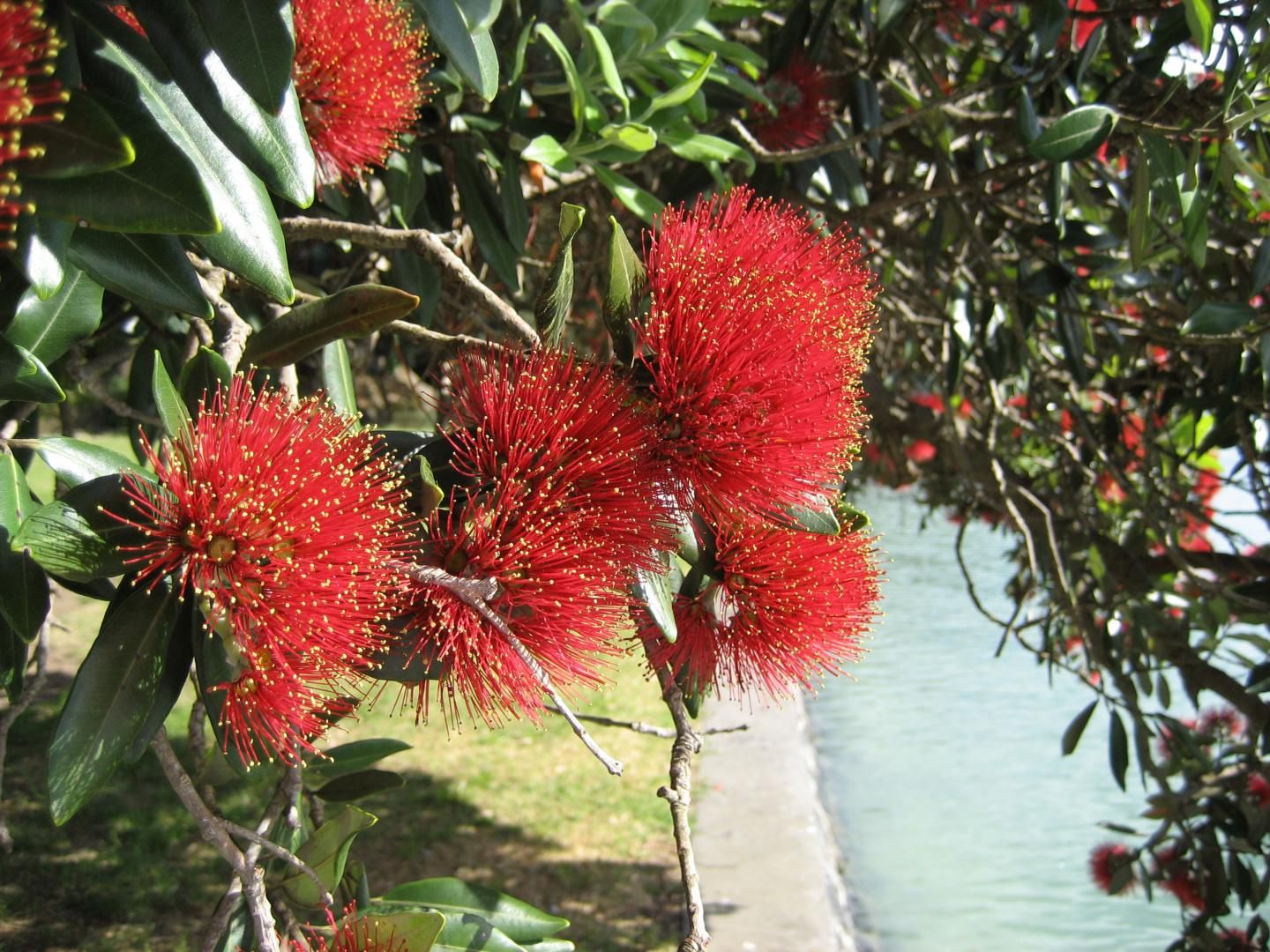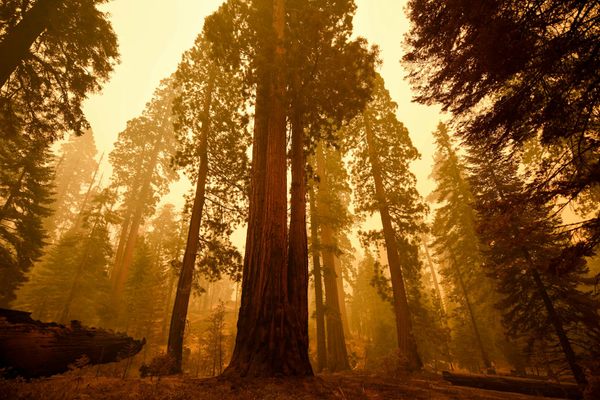This Iconic New Zealand Tree Is Probably From Australia
But pōhutukawa disappeared from the continent a long time ago.

The New Zealand Christmas tree’s bright red blossoms look a bit like fireworks and are a common Christmas decoration on the South Pacific islands. Its densely branched form is a common sight on New Zealand cliffsides. Also known as the pōhutukawa, the tree is part of Māori tradition and lore, and its tough wood was used for tools and boats. But according to new research, this distinctly Kiwi tree isn’t originally from New Zealand at all, but rather its neighbor Australia.
The pōhutukawa and its botanical cousins, all members of the myrtle tree family, are found all over the South Pacific. Species have taken up residence in places such as Hawaii, Tahiti, South America, Africa, and even sub-Antarctic islands. The one place these trees are not found is Australia. The family has a fairly efficient seed dispersal method that managed to help it spread so widely, so scientists aren’t quite sure why they aren’t found in Australia today.

While modern trees may not live on the continent, their ancestors certainly did. The oldest known fossils of trees in the pōhutukawa genus date back to 35-40 million years ago and were found in Tasmania. An Australian research team has found two new fossilized species in the genus, also in Tasmania, that date back to 25 million years ago. The newly discovered species weren’t as widely distributed as the older fossils, said University of Adelaide researcher Myall Tarran in a press release. “These species may not have been as well adapted for long-distance dispersal as those other species, and so it is likely that they originated [in Australia].”




















Follow us on Twitter to get the latest on the world's hidden wonders.
Like us on Facebook to get the latest on the world's hidden wonders.
Follow us on Twitter Like us on Facebook